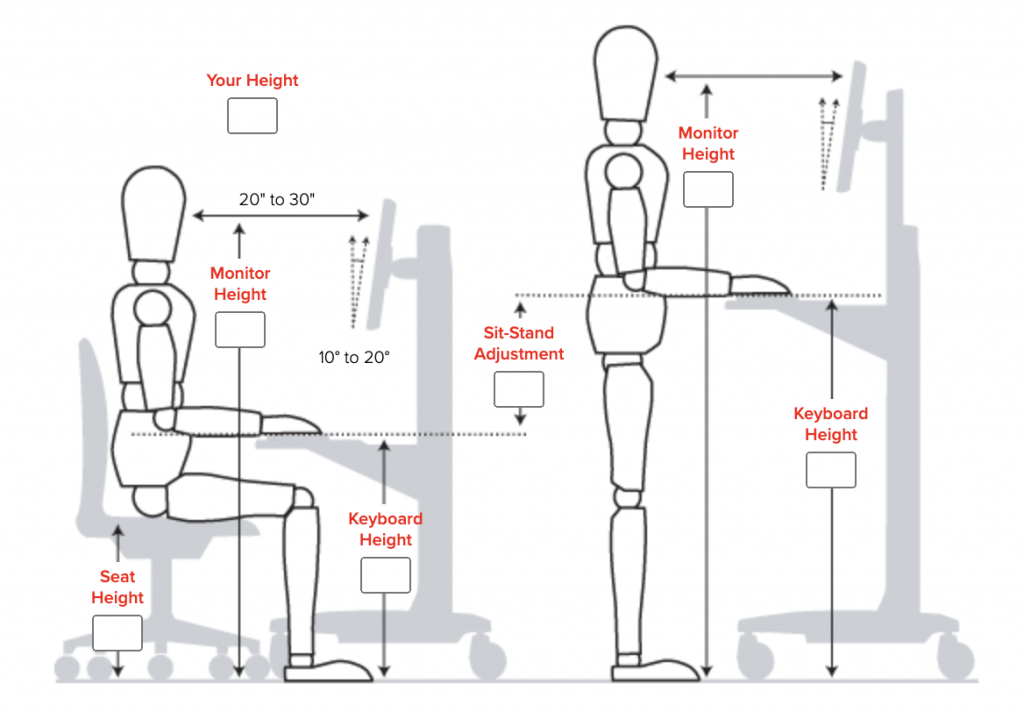Many of us spend a significant amount of time working on computers. However, have you ever stopped to consider the impact this prolonged computer use can have on your health? Creating an ergonomic computer workstation is not just a luxury but a necessity for maintaining productivity, preventing discomfort, and promoting overall well-being. In this article, we will explore the significance of ergonomics and provide practical tips for setting up an ergonomic workstation that supports your health and enhances your work performance.
Understanding Ergonomics
Ergonomics refers to the science of designing and arranging our environment to fit our needs and capabilities. When it comes to computer workstations, ergonomics is crucial for preventing musculoskeletal disorders and reducing discomfort. Key elements of an ergonomic setup include a proper chair and desk height, monitor position, keyboard and mouse placement, and adequate lighting. These factors play a vital role in ensuring optimal posture, reducing strain, and promoting physical well-being.
Benefits of an Ergonomic Computer Workstation

Improved Comfort and Reduced Discomfort
Sitting for extended periods at a poorly designed workstation can lead to various discomforts, including back pain, neck strain, and eye strain. An ergonomic workstation addresses these issues by providing proper support and alignment for your body. By maintaining good posture and ensuring the right adjustments, you can alleviate discomfort and create a comfortable work environment.
Increased Productivity
Discomfort and pain caused by an inadequate workstation can significantly impact your productivity. When you’re constantly distracted by discomfort, it becomes challenging to focus on your work and maintain a steady workflow. An ergonomic computer workstation eliminates these distractions, allowing you to concentrate on tasks and enhance your overall productivity. Additionally, proper ergonomics reduce fatigue, enabling you to stay energized and engaged throughout the day.
Prevention of Musculoskeletal Disorders
Prolonged computer use in a non-ergonomic setup can lead to the development of musculoskeletal disorders, such as carpal tunnel syndrome and repetitive strain injuries. These conditions can cause chronic pain and significantly affect your quality of life. By implementing ergonomic principles, you can minimize the risk of such disorders. Ergonomic chairs, adjustable desks, and proper positioning of keyboard and mouse contribute to maintaining neutral postures and reducing the strain on your muscles and joints.
Enhanced Overall Well-being
Creating an ergonomic computer workstation not only improves physical health but also has a positive impact on your mental well-being. When you’re comfortable and supported in your workspace, you’re likely to experience improved mood, reduced stress levels, and increased job satisfaction. The holistic benefits of an ergonomic workstation extend beyond the physical realm, making it an investment in your overall well-being.
Creating an Ergonomic Computer Workstation
Ergonomic Chair and Desk
Investing in an ergonomic chair with adjustable features is crucial for maintaining a healthy posture and reducing strain on your back and neck. Additionally, your desk should be at an appropriate height to ensure that your arms are comfortably positioned while typing and using the mouse. A well-designed desk will accommodate your height and provide ample space for your work activities.

Source: Ergotron Workspace Planner (https://www.ergotron.com/tools/workspace-planner)
Monitor Placement and Ergonomic Accessories
Positioning your monitor at eye level and at a suitable distance is essential for minimizing strain on your neck and eyes. An adjustable monitor stand can help achieve the optimal viewing height. Additionally, ergonomic accessories such as a keyboard tray or wrist rest can provide added support and promote better hand and wrist alignment.
Keyboard and Mouse Setup
Choosing an ergonomic keyboard and mouse is crucial for reducing the risk of repetitive strain injuries and promoting comfortable typing and navigation. Look for keyboards and mice that offer ergonomic designs and support natural hand and wrist positions. Proper placement of the keyboard and mouse is also important to minimize strain on your wrists and hands.
Lighting and Environmental Considerations
Inadequate lighting and environmental factors can impact both your comfort and productivity. Ensure that your workspace is well-lit to reduce eye strain and minimize glare on your computer screen. Consider using adjustable desk lamps or task lighting to provide targeted illumination. Additionally, pay attention to other environmental factors such as noise levels and room temperature, as they can affect your overall comfort and focus.
Tips for Maintaining an Ergonomic Workstation
Regular Breaks and Stretching Exercises
Even with an ergonomic workstation, it’s important to take regular breaks to avoid prolonged sitting and reduce muscle fatigue. Incorporate short breaks into your work routine and use that time to stretch your body and get moving. Simple stretching exercises, such as neck rolls, shoulder shrugs, and wrist rotations, can help alleviate tension and promote blood circulation.
Regular Maintenance and Adjustments
Ergonomic workstations require periodic maintenance and adjustments to ensure their effectiveness. Regularly assess your workstation setup and make necessary adjustments based on your changing needs. Clean your equipment, such as your keyboard and mouse, to keep them in good working condition. Pay attention to signs of wear and tear and replace any worn-out or damaged components promptly. By maintaining your ergonomic workstation, you can continue to reap its benefits in the long run.
Conclusion
Investing in an ergonomic computer workstation is not just a luxury but a crucial step towards maintaining your health, enhancing productivity, and promoting overall well-being. By considering the principles of ergonomics and implementing practical adjustments to your workspace, you can create a comfortable and supportive environment that minimizes discomfort, prevents musculoskeletal disorders, and boosts productivity. Remember to prioritize regular breaks, incorporate stretching exercises, and perform periodic maintenance to ensure the longevity of your ergonomic setup. Embrace the power of ergonomics and unlock your full potential in the digital age.
Remember, a comfortable and supportive workstation is the foundation for your success and well-being in the digital world
